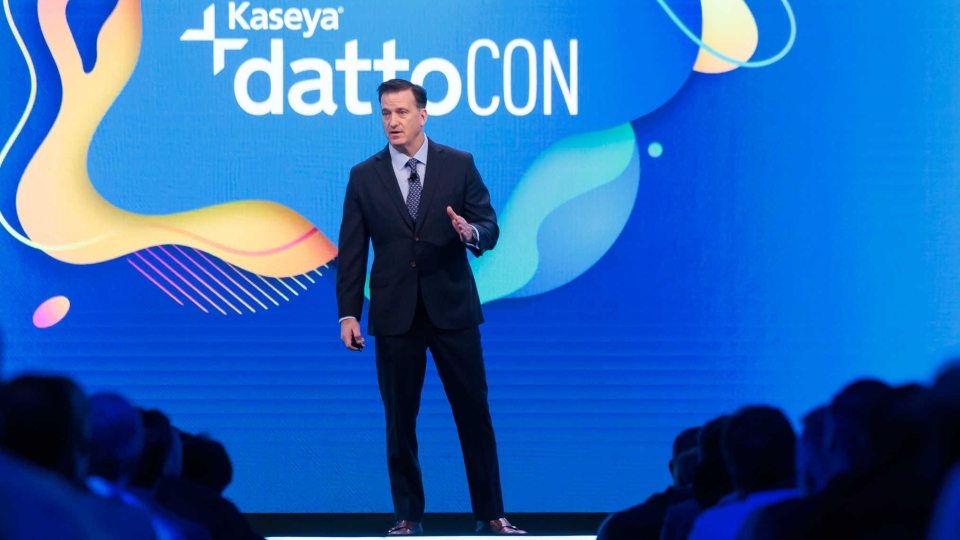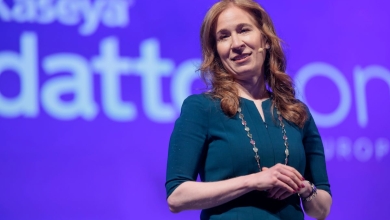
In a market with low margins and intense competition, managed service providers (MSPs) are under pressure to improve profitability and productivity. Kaseya, a dominant player in this sector, is attempting to redefine the MSP landscape through aggressive pricing, robust platform integration, and automation. IT Europa asked Kaseya CEO Fred Voccola to share the company’s vision for increasing MSP profit margins and transforming their business operations, outlining a strategy that could disrupt the sector.
Automated Integration for Efficiency Gains
Kaseya’s approach to integration is reminiscent of Microsoft’s strategy in the 1990s, when the software giant made separate tools like Word, Excel, and PowerPoint work together seamlessly. Voccola points to Microsoft’s early days as an example of integration done right. He recalls when Microsoft began including a universal spell check feature across all its applications, eliminating the need to buy separate software for each tool. The “aha” moment, as he puts it, was when users could insert an Excel table into PowerPoint, and the spell check would function seamlessly on every part of that embedded table. “That’s what Kaseya 365 is,” he says, explaining that Kaseya’s platform is designed to offer a similarly interconnected experience for MSPs.
By uniting products in a single platform, Kaseya aims to reduce repetitive tasks and increase efficiency for MSPs. “[We’re] eliminating 30 to 40% of the manual, mundane things that MSP technicians or MSP engineers have to do—that’s crazy,” he adds. For MSPs, this integration means that routine tasks are streamlined, allowing technicians to devote their time to higher-value work and improve their overall service offering.
Voccola further elaborates on this integration by drawing a direct parallel to the user experience Microsoft achieved with its own products. “Microsoft integrated all of the components so well… the same way that ODBC drivers allowed you to insert Word and Excel,” he notes. In Kaseya’s platform, automation like the “drop a phish” tool—which handles complex processes for phishing simulation setup—turns multi-step procedures into one-click solutions. “It’s one button done,” says Voccola. This level of automation not only saves MSPs time but also minimizes error, freeing up technicians from repetitive tasks.
Aggressive Pricing: A Competitive Edge?
Voccola doesn’t shy away from discussing Kaseya’s bold pricing strategy. With the new Kaseya 365 User bundle priced at £2.29 per user, the platform’s adoption rate has been explosive. “We launched [Kaseya 365 user]… and we have about 900 MSPs that have signed up… in less than a freaking week. Like, that’s bonkers,” he shares. The aggressive pricing has allowed Kaseya to make a strong first impression, and Voccola believes it will continue to attract more users. He draws a parallel to Microsoft’s pricing strategy in the 90s, which forced standalone competitors to adjust or fade away: “Microsoft charged less per Office than any single thing. We’re doing the same thing.”
This approach is not without challenges, and some competitors are feeling the strain. As Voccola observes, “Single product companies, point solution companies do not have a long-term viability in the MSP market.” Kaseya’s bundled platform, which offers an integrated suite of tools for a fraction of the price of standalone solutions, is difficult for competitors to beat. “What we’re doing…we’re giving like, £14 pounds worth of kit for two and a half pounds,” he points out, suggesting that Kaseya’s value proposition is simply too compelling for most MSPs to ignore.
The Future: Exclusively MSP-Focused
Despite the broader appeal of Kaseya’s platform, the company remains resolutely focused on MSPs. “We are an MSP company,” Voccola asserts, adding that the platform’s design reflects the unique needs of MSPs rather than large enterprises. Unlike a corporate IT department, an MSP’s technicians often perform multiple roles, and an all-in-one platform offers a significant advantage. “The person who does Endpoint Security does endpoint security, the person who does patch management does patch management…having both of that in one screen doesn’t add value to [a bank for example],” he explains, illustrating why Kaseya’s focus remains on serving MSPs rather than branching into enterprise markets.
Looking forward, Kaseya’s path is clear. Voccola is aiming to change the economics of the MSP market, enabling providers to achieve profit margins closer to those in other professional sectors. “The whole goal of this is to get an MSP to be at 40% profit margin, to look like a solicitor,” he says. His confidence in Kaseya’s platform is apparent: “These MSPs, they’re so overwhelmed… if we can cut out two hours of their day and give it back to them, they get to go home and see their kids on time.”
With new features and enhancements on the horizon, Kaseya’s vision for the MSP market could fundamentally reshape how these providers operate. By offering an integrated, affordable, and automation-driven platform, Voccola belives Kaseya is positioning itself to not only transform the competitive landscape but also create a more profitable future for MSPs.


